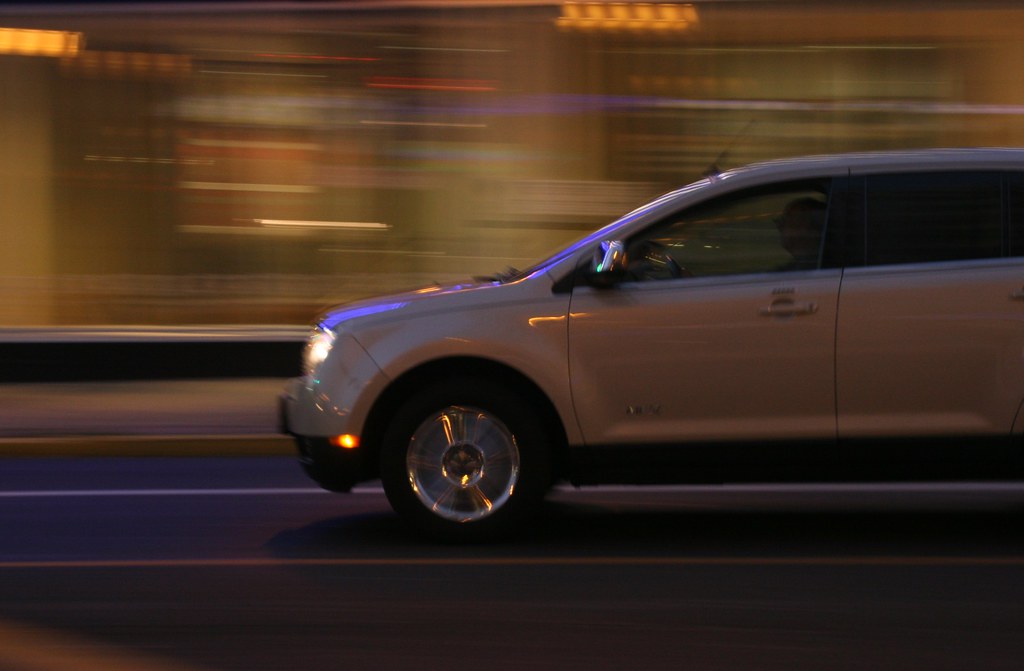
The decision to purchase a new or used vehicle represents a significant financial commitment for most consumers. While the allure of a shiny new model or the practicality of a pre-owned option can be strong, the reality of ownership often introduces unexpected challenges, leading to a phenomenon known as buyer’s remorse. This sentiment is not uncommon, as even experienced drivers may find themselves questioning a vehicle choice after extended use when previously unforeseen issues arise, prompting a desire to move on from their investment.
For individuals nearing or in retirement, vehicle purchases carry an even greater weight, often influenced by aspirations of a new lifestyle, such as extensive road trips. However, experts caution that these dream vehicles, particularly large SUVs, can quickly transform into financial liabilities. Taylor Kovar, a certified financial planner (CFP) and CEO of 11 Financial, notes, “I’ve seen retirees buy big SUVs thinking they’ll finally have time for road trips, only to realize they’re burning through savings faster than they’re burning gas.” He emphasizes that the cumulative impact of “higher insurance, maintenance and fuel costs” can turn an aspirational purchase into an “expensive driveway ornament,” underscoring the critical need for informed decision-making based on long-term ownership costs.
This article provides an objective, data-driven analysis of eight specific SUVs that have been identified by automotive experts and reported by owners as frequently leading to regret. Drawing on insights from professionals like Chris Pyle of JustAnswer and Marguerita Cheng of Blue Ocean Global Wealth, alongside broader owner feedback, we delve into the core reasons behind this dissatisfaction. Our aim is to equip consumers with practical advice and verifiable facts, helping them navigate the complexities of vehicle acquisition to avoid common pitfalls and make choices that truly align with their financial goals and lifestyle needs.
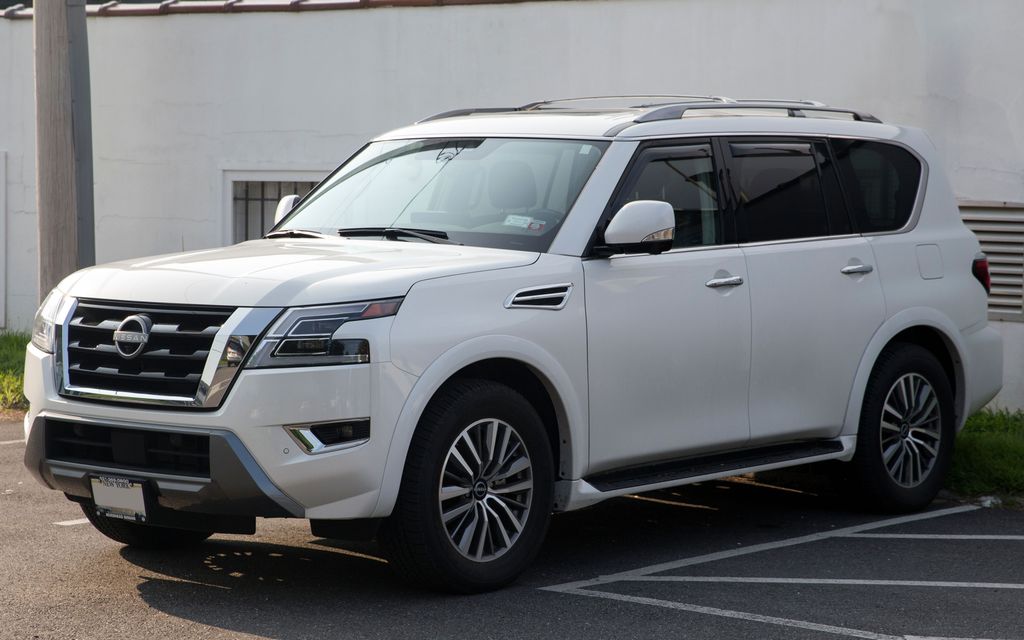
1. **Nissan Armada**According to Chris Pyle, an esteemed auto expert with JustAnswer, the Nissan Armada frequently appears on lists of vehicles that retirees, in particular, may come to regret purchasing. While it presents itself as a large and capable SUV, a closer examination reveals design shortcomings and operational inefficiencies that detract from the ownership experience. The primary concern Pyle highlights is related to the interior design, which, despite the vehicle’s substantial size, fails to maximize usable space effectively.
Pyle points out that the Armada possesses a considerable amount of interior volume, yet the layout and configuration of its components create a perception of crampedness. This poor design means that even with ample physical dimensions, the internal environment feels less spacious and functional than expected. Such a paradox can lead to daily frustrations for owners, particularly those who anticipate using the vehicle for family transport or extensive cargo hauling, undermining the very purpose of acquiring a large SUV.
Beyond the spatial inefficiencies, the Nissan Armada also faces scrutiny regarding its fuel efficiency. For retirees or any driver conscious of ongoing operational expenses, a vehicle’s fuel consumption is a critical factor. Pyle indicates that the Armada’s fuel efficiency may not be favorable, which translates directly into higher expenditures at the pump over time. This ongoing cost can significantly impact a household budget, particularly when considering the long-term financial planning typical of retirement.
The combination of an unoptimized interior and less-than-ideal fuel economy can transform the initial appeal of the Nissan Armada into a source of considerable buyer’s remorse. What might initially seem like a robust and spacious vehicle suitable for various activities gradually reveals itself to be an inefficient and potentially frustrating daily companion. These issues, though seemingly minor individually, accumulate to diminish the overall value proposition and satisfaction derived from ownership.
Ultimately, consumers considering the Nissan Armada are advised to weigh these expert observations carefully. The promises of size and capability must be balanced against the practical realities of interior functionality and sustained operational costs. For many, particularly those seeking a pragmatic and cost-effective long-term solution for their automotive needs, the reported drawbacks of the Armada may suggest that other options could offer a more satisfying and less regrettable ownership experience.
Car Model Information: 2011 Nissan Armada SV
Caption: 2023 Nissan Armada
Manufacturer: Nissan
Aka: Nissan Patrol
Production: 2003–present
ModelYears: 2004–present
Class: Full-size,sport utility vehicle
BodyStyle: SUV
Layout: Front-engine, rear-wheel-drive layout
Categories: 2010s cars, 2020s cars, All-wheel-drive vehicles, All Wikipedia articles written in American English, All articles with unsourced statements
Summary: The Nissan Armada (originally badged as the Nissan Pathfinder Armada) is a full-size SUV manufactured by Nissan for the North American market, since 2003 for the 2004 model year.
From 2003 to 2015, the first-generation Armada was assembled in Canton, Mississippi based on the Nissan Titan. From mid-2016 onwards, the second-generation Armada is built in Yukuhashi, Kyushu, Japan. It shares the same platform as the Nissan Patrol, with American-specific modifications, and went on sale in mid-2016 as a 2017 model. A luxury version of the Armada has been sold as the Infiniti QX80 (originally QX56).
Get more information about: Nissan Armada
Buying a high-performing used car >>>
Brand: Nissan Model: Armada
Price: $8,645 Mileage: 149,775 mi.
Read more about: The 14 Indestructible Off-Roaders Engineered to Conquer a Quarter-Century of Trails

2. **GMC Yukon**The GMC Yukon, a prominent contender in the large SUV segment, is another vehicle that Chris Pyle, the auto expert from JustAnswer, suggests drivers, especially retirees, may come to regret. Its substantial size and presence often come with a price tag that positions it as a more expensive option upfront. This initial investment alone can be a point of concern for budget-conscious buyers, but the financial implications extend far beyond the purchase price, encompassing several long-term costs that can erode owner satisfaction.
A significant factor contributing to buyer’s remorse with the GMC Yukon is its potential for rapid depreciation. Vehicles that lose a substantial portion of their value quickly represent a considerable financial drain for owners, as their equity diminishes faster than anticipated. For retirees, who may be looking to retain vehicle value as part of their overall asset management, a rapidly depreciating asset can be particularly problematic, turning what was hoped to be a stable investment into a source of financial disappointment.
Furthermore, the cost of insuring a GMC Yukon can be notably high. Given its size, power, and market positioning, insurance premiums tend to be elevated compared to smaller or less performance-oriented vehicles. These ongoing insurance expenses add another layer to the total cost of ownership, contributing to the financial burden that Taylor Kovar, CFP, previously highlighted regarding large SUVs. Such recurring costs can significantly strain retirement savings if not adequately factored into the initial purchasing decision.
In addition to the costs associated with acquisition, depreciation, and insurance, the GMC Yukon may also fall short of the fuel efficiency retirees typically seek. Large, powerful SUVs often consume more fuel, and the Yukon is no exception. This lower fuel economy directly impacts the operational budget, making regular travel more expensive than desired. For those planning extensive road trips or simply frequent local excursions, the cumulative cost of fuel can quickly become a noticeable and unwelcome expense.
Considering these multiple financial factors—a higher initial cost, rapid depreciation, expensive insurance, and suboptimal fuel efficiency—the GMC Yukon presents a compelling case for potential buyer’s remorse among discerning consumers, particularly retirees. While it may offer certain advantages in terms of space and capability, these benefits must be carefully weighed against the substantial and ongoing financial commitment it demands. Thorough research into the total cost of ownership is essential before committing to such a purchase.
Car Model Information: 2017 GMC Yukon SLT
Name: Chevrolet Tahoe,GMC Yukon
Manufacturer: General Motors
Production: 1991–present (Yukon),1994–present (Tahoe)
Class: Full-size SUV
Related: Cadillac Escalade,Chevrolet Suburban,Chevrolet Silverado,Hummer H2
Layout: Front-engine, rear-wheel-drive layout
Predecessor: Chevrolet K5 Blazer
Caption: 2022 Chevrolet Tahoe RST (fifth generation)
Categories: 2000s cars, 2010s cars, 2020s cars, All-wheel-drive vehicles, All articles with unsourced statements
Summary: The Chevrolet Tahoe () is a line of full-size SUVs from Chevrolet marketed since the 1995 model year. Marketed alongside the GMC Yukon for its entire production, the Tahoe is the successor of the Chevrolet K5 Blazer; the Yukon has replaced the full-sized GMC Jimmy. Both trucks derive their nameplates from western North America, with Chevrolet referring to Lake Tahoe; GMC, the Canadian Yukon.
Initially produced as a three-door SUV wagon, a five-door wagon body was introduced for 1995, ultimately replacing the three-door body entirely. The five-door wagon shares its body with the Chevrolet and GMC Suburban (today, GMC Yukon XL) as a shorter-wheelbase variant. Since 1998, the Tahoe has served as the basis of the standard-wheelbase GMC Yukon Denali and Cadillac Escalade luxury SUVs. The Tahoe is sold in North America, parts of Asia such as the Philippines, and the Middle East, plus other countries including Bolivia, Chile, Peru, Colombia, Ecuador, and Angola as a left-hand-drive vehicle. The Yukon is only sold in North America and the Middle East.
The Tahoe has regularly been the best-selling full-size SUV in the United States, frequently outselling its competition by two to one.
Get more information about: Chevrolet Tahoe
Buying a high-performing used car >>>
Brand: GMC Model: Yukon
Price: $22,950 Mileage: 123,207 mi.
Read more about: Unearthing Automotive Relics: Why Bench Seats Vanished—And 12 Modern Vehicles Still Keeping the Dream Alive
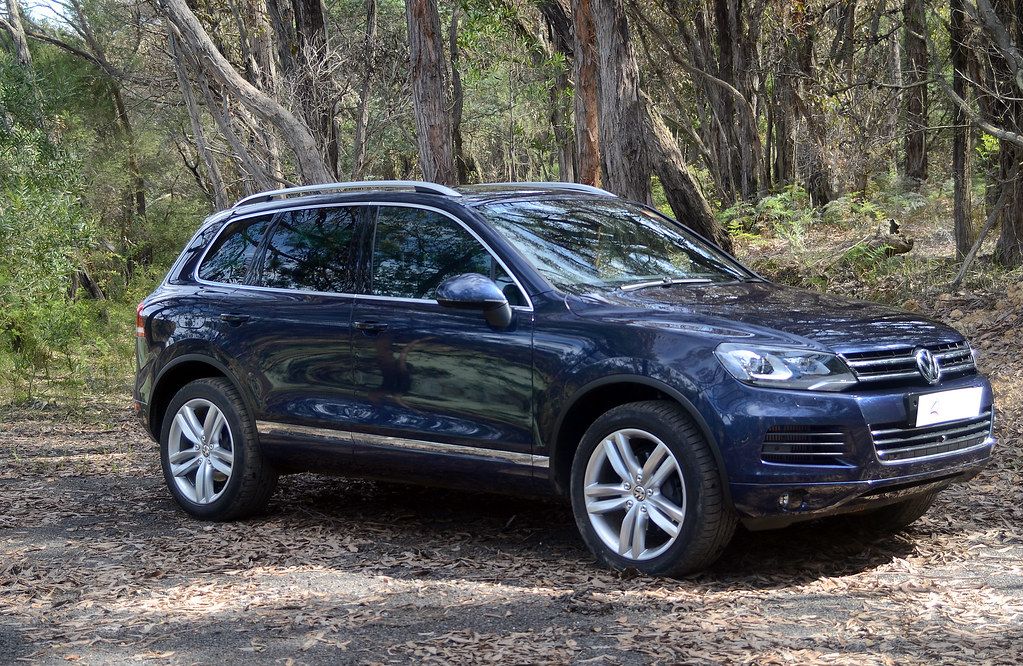
3. **Volkswagen Touareg**Expert financial planner Marguerita Cheng, CEO of Blue Ocean Global Wealth, sheds light on the Volkswagen Touareg as a vehicle that, despite some admirable qualities, often results in buyer’s remorse for her clients. While these clients initially appreciated specific attributes of the SUV, their overall long-term experience led to regret, prompting them to seek alternatives for future vehicle needs. This indicates a discrepancy between initial impressions and sustained satisfaction, a common theme in regrettable purchases.
Cheng noted that clients expressed satisfaction with the Touareg’s handling characteristics, suggesting a positive driving dynamic and responsiveness. Additionally, its durability was a recognized strong point, implying a robust build quality that could withstand the rigors of regular use. These aspects are often priorities for SUV buyers, who value a secure and long-lasting vehicle, and the Touareg seemingly delivered on these fronts in the short term.
However, the ultimate regret experienced by clients suggests that these positive attributes were not sufficient to outweigh other significant drawbacks. The broader ownership experience, encompassing various aspects beyond initial handling and durability, proved to be less than ideal. This points to underlying issues that may only become apparent after a period of ownership, gradually eroding the initial satisfaction and leading to a desire for a different vehicle.
Cheng specifically highlighted that her clients eventually transitioned to Lexus vehicles for their subsequent purchases, citing “technology features and better reliability” as the key motivating factors. This comparison strongly implies that the Volkswagen Touareg may have been perceived as lacking in advanced technological integration or, more crucially, in long-term reliability. In today’s automotive market, sophisticated technology and consistent reliability are paramount for consumer satisfaction, influencing both convenience and peace of mind.
The collective feedback from Cheng’s clients underscores that while a vehicle might offer specific desirable traits, a holistic evaluation of technology, reliability, and overall ownership experience is crucial. The Touareg’s failure to meet these comprehensive expectations ultimately led to a collective regret among owners who eventually sought out brands known for consistently delivering on these critical consumer priorities, thereby making it a cautionary tale for potential buyers prioritizing a well-rounded and dependable SUV.
Car Model Information: 2009 Volkswagen Touareg 2 V6 TDI
Name: Volkswagen Touareg
Manufacturer: Volkswagen
Production: August 2002 – present
ModelYears: 2003–present
Assembly: unbulleted list
Class: Mid-size,luxury car,crossover SUV
BodyStyle: SUV
Layout: Front-engine, four-wheel-drive
Categories: 2010s cars, 2020s cars, All-wheel-drive vehicles, All articles containing potentially dated statements, All articles needing additional references
Summary: The Volkswagen Touareg (German pronunciation: [ˈtuːaʁɛk]) is a mid-size luxury crossover SUV produced by Volkswagen since 2002. The vehicle is named after the nomadic Tuareg people, inhabitants of the Saharan interior in North Africa. The Touareg was originally developed with the Porsche Cayenne and Audi Q7 and as of October 2020, the Touareg was developed with the Audi Q8, the Bentley Bentayga and the Lamborghini Urus, which shares their MLB Evo platform and chassis. The first generation (2002–2010) offered five, six, eight, ten, and twelve-cylinder engine choices.
Get more information about: Volkswagen Touareg
Buying a high-performing used car >>>
Brand: Volkswagen Model: Touareg
Price: $6,999 Mileage: 183,087 mi.
Read more about: Unleash Your Inner Driver: 13 Simple, Fun, and Affordable Cars That Are Perfect Daily Drivers
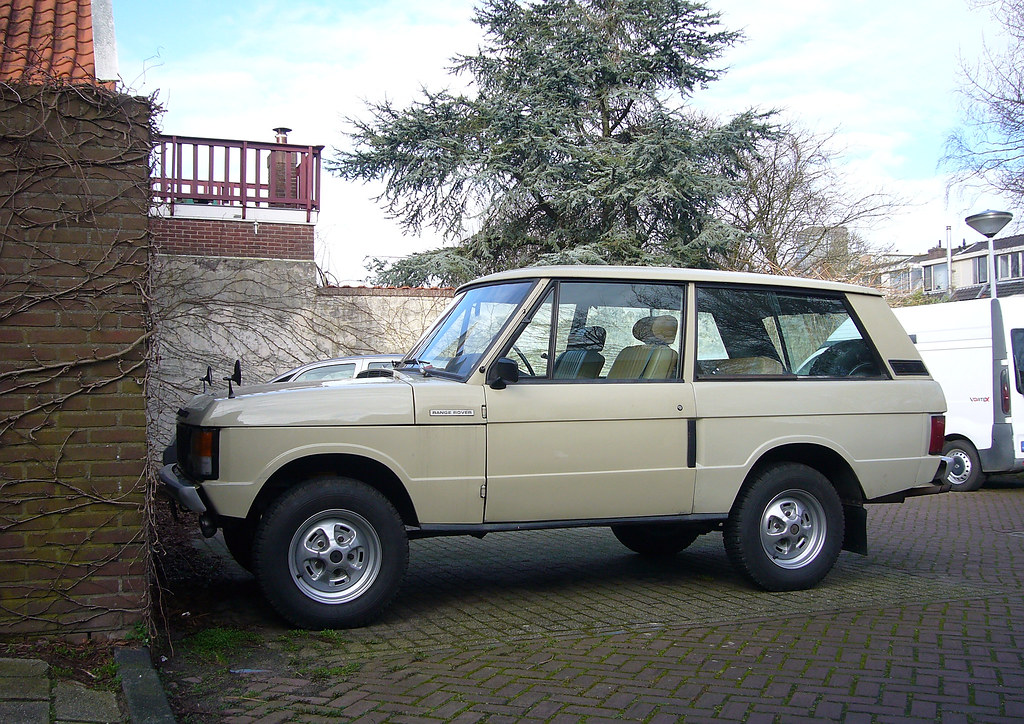
4. **Land Rovers**Marguerita Cheng, the CFP and CEO of Blue Ocean Global Wealth, further identifies Land Rovers as a category of SUVs that have consistently disappointed her retiree and other clients. Despite their reputation for luxury and off-road capability, these vehicles often present significant challenges to owners, leading to a profound sense of regret. Cheng’s observations reveal that the allure of the Land Rover brand often does not translate into a trouble-free or financially prudent ownership experience for many consumers.
The primary reason cited for client dissatisfaction with Land Rovers revolves around their notoriously high maintenance costs. These vehicles, known for their sophisticated engineering and premium components, often require specialized servicing and replacement parts that come with a substantial price tag. Routine maintenance, as well as unexpected repairs, can quickly accumulate to an alarming sum, placing an unforeseen financial burden on owners, particularly retirees managing fixed incomes.
Compounding the issue of high maintenance expenses is a reported lack of reliability. Vehicles that frequently break down or require attention beyond routine service schedules not only incur additional costs but also cause considerable inconvenience and stress. For owners who depend on their vehicle for daily commuting, travel, or family needs, a lack of reliability can severely disrupt their lives, diminishing trust in the brand and the vehicle itself. This unreliability often necessitates repeated trips to the service center, further amplifying the maintenance cost problem.
The combination of expensive upkeep and inconsistent reliability means that the total cost of ownership for a Land Rover often far exceeds initial expectations. What might begin as an exciting luxury purchase can quickly devolve into a source of financial strain and ongoing frustration. This scenario is particularly problematic for retirees who seek dependable transportation without the constant worry of exorbitant repair bills and unexpected downtime.
Therefore, while Land Rovers may offer impressive features, a commanding presence, and a certain level of prestige, the expert feedback from Marguerita Cheng suggests that prospective buyers should approach these vehicles with a clear understanding of the potential long-term financial commitments and reliability concerns. Thorough research into typical ownership costs and consumer reliability reports is paramount to avoid the widespread disappointment and regret reported by many existing owners, especially those seeking predictable and manageable vehicle expenses in their post-retirement years.
Continuing our comprehensive examination of vehicles that frequently lead to owner dissatisfaction, this second section delves into four additional SUVs that, despite their market presence, have become sources of significant buyer’s remorse. Our analysis, grounded in expert insights and owner feedback, will highlight common mechanical failures, excessive fuel consumption, specific transmission issues, and overall concerns regarding performance and build quality. The objective is to provide prospective buyers with a data-driven perspective on these models, enabling more informed purchasing decisions and helping to circumvent the financial and practical frustrations reported by current owners.
Read more about: 15 Movies So Bad They Became Amazing Cult Classics

5. **Toyota Land Cruiser**The Toyota Land Cruiser, often perceived as a symbol of rugged durability and off-road prowess, regrettably surfaces in discussions concerning vehicles that can lead to buyer’s remorse, particularly among discerning consumers. Marguerita Cheng, a certified financial planner and CEO of Blue Ocean Global Wealth, specifically points to the Land Cruiser as an SUV that retirees may ultimately regret purchasing. Her observations underscore critical operational aspects that can significantly impact long-term ownership satisfaction.
One of the primary concerns highlighted by Cheng is the Land Cruiser’s classification as a “gas guzzler.” This descriptor directly translates to significantly higher fuel consumption than many other vehicles on the market, presenting an ongoing financial burden for owners. For retirees or individuals on fixed incomes, the cumulative cost of refueling such a vehicle can quickly diminish savings earmarked for other essential expenses or leisure activities, transforming an aspirational purchase into a source of constant financial drain.
Beyond its fuel appetite, the Land Cruiser is also noted by Cheng as a vehicle that “can be difficult to handle.” This assessment suggests potential issues with its maneuverability, responsiveness, or overall driving dynamics, especially in everyday urban or varied driving conditions. While its size and robust build might be advantageous for certain niche applications like extreme off-roading, these very characteristics can make it unwieldy and less enjoyable for routine use, contributing to daily frustrations for the driver.
The combination of excessive fuel consumption and challenging handling characteristics presents a substantial drawback for potential buyers. While the Land Cruiser may appeal with its reputation and robust capabilities, these practical realities can quickly erode the initial enthusiasm. Consumers prioritizing manageable operational costs and a comfortable, easy-to-drive experience should thoroughly evaluate these factors before committing to a purchase that may prove to be a source of persistent regret.
Read more about: Beyond the Odometer: 15 Legendary Engines That Defy Time, Powering On Strong Past 200,000 Miles and into Automotive Immortality
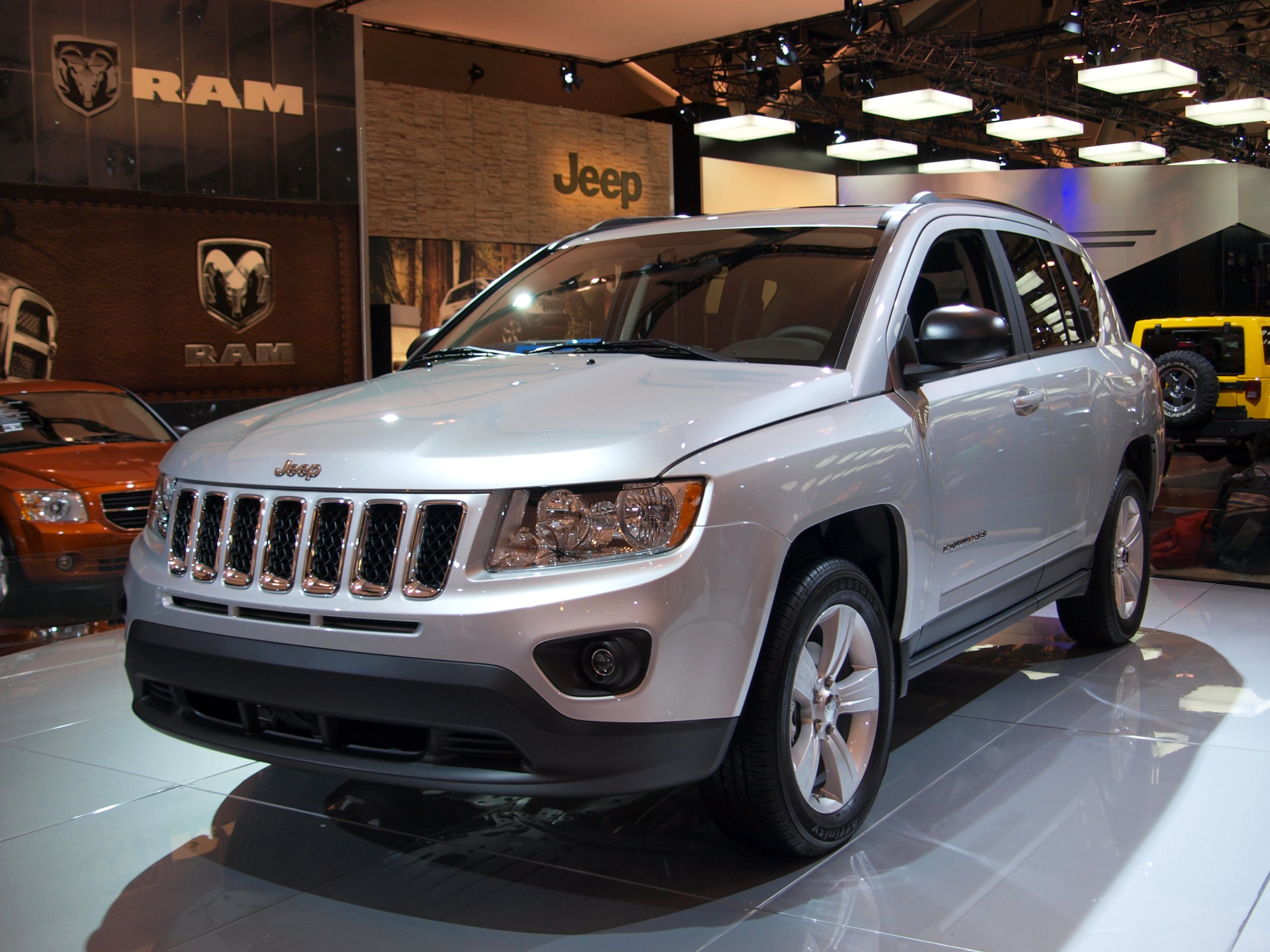
6. **Jeep Compass**The Jeep Compass, a compact SUV, has earned a reputation for being a source of considerable frustration among its owners across various model years, prompting experts to advise potential buyers to “steer clear of this SUV” if they wish to avoid significant automotive headaches. This strong recommendation stems from a consistent pattern of severe mechanical and systemic issues that detract significantly from the ownership experience and can lead to substantial repair costs.
A predominant complaint surrounding the Jeep Compass pertains to its transmission systems, specifically the continuously variable transmission (CVT) and the 9-speed automatic transmissions. Owners frequently report experiencing “herky-jerky shifting” and, more alarmingly, “catastrophic failure.” Such transmission malfunctions are not only inconvenient but can also be extremely costly to repair or replace, representing a major financial risk for owners and a significant blow to the vehicle’s long-term reliability.
Beyond the transmission woes, the Jeep Compass is also plagued by a range of other performance and reliability issues. Reports frequently detail “poor engine performance,” which can manifest as a lack of power, sluggish acceleration, or inconsistent operation. Compounding this, owners have noted “excessive oil consumption,” a problem that indicates potential internal engine wear or design flaws and necessitates frequent monitoring and topping off of engine oil, adding to maintenance burdens.
Furthermore, the electrical system of the Jeep Compass has also been identified as a source of problems. Electrical issues can range from minor annoyances with infotainment or accessories to more critical failures impacting essential vehicle functions, posing safety risks and leading to complex, expensive diagnostics and repairs. The confluence of these engine, transmission, and electrical concerns creates a comprehensive reliability profile that is far from reassuring for prospective buyers.
In light of these widespread and severe reported problems, the Jeep Compass represents a high-risk purchase for consumers seeking dependable and trouble-free transportation. The potential for frequent and costly repairs, coupled with a diminished driving experience, strongly suggests that alternative compact SUVs offering proven reliability and better long-term value should be thoroughly considered. Ignoring these well-documented issues could lead to significant buyer’s remorse, echoing the sentiments of many current and past owners.
Read more about: Buyer’s Remorse on Full Display: 15 Vehicles Motorists Swear They’d ‘Unchoose’ if They Could, According to Driver Confessions
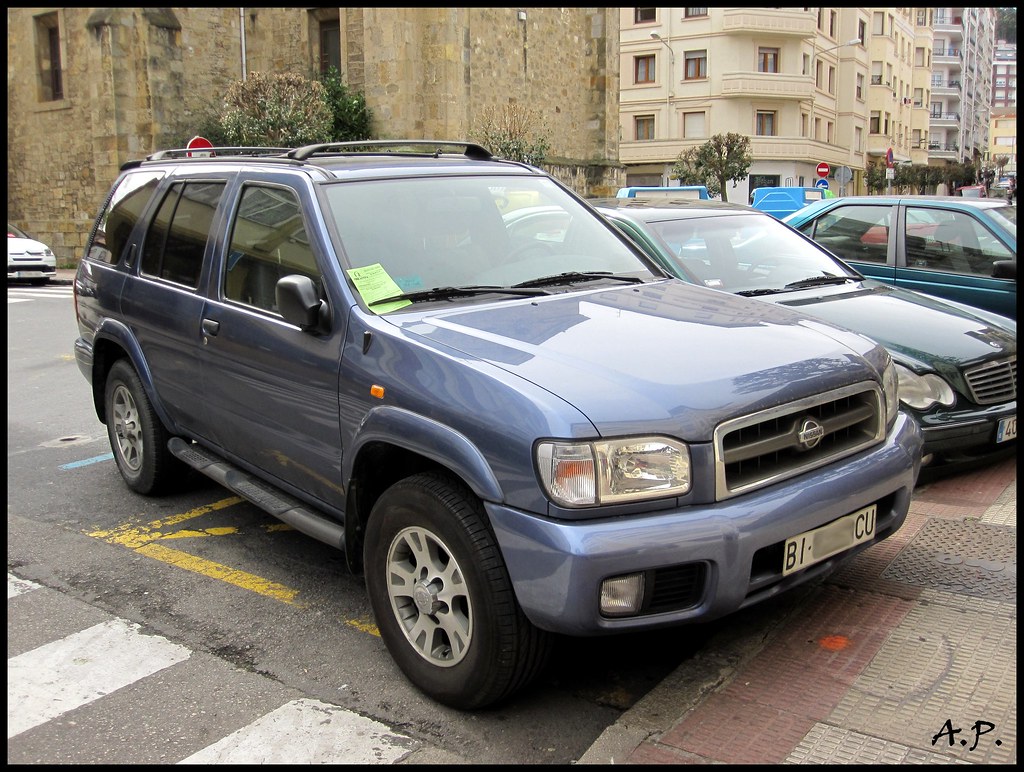
7. **Nissan Pathfinder**Despite its popularity as an SUV, the Nissan Pathfinder has consistently garnered feedback from owners expressing regret over their purchase decisions, largely due to recurring mechanical issues that undermine its perceived value. The specific problems identified span critical components of the vehicle, particularly its transmission system, and can escalate to costly repairs, challenging the notion of a reliable family vehicle.
A significant point of contention for Nissan Pathfinder owners is the continuously variable transmission (CVT) employed in various model years. This transmission type, which has been a “thorn in the side” of many Nissan vehicle owners, is reported to exhibit a range of undesirable behaviors in the Pathfinder. Owners frequently describe “rough shifting,” a sensation of “shuddering” during acceleration or changes in speed, and, critically, instances of “overheating.”
The issues with the Pathfinder’s CVT are not merely minor inconveniences; they can be indicative of fundamental design or manufacturing flaws that lead to severe operational problems. The context explicitly notes that, to the “chagrin of some Nissan Pathfinder owners, sometimes they have to replace the transmission.” This is a major repair, often costing thousands of dollars, which can significantly negate any perceived savings from the initial purchase and quickly lead to profound buyer’s remorse.
Beyond the well-documented transmission problems, the Nissan Pathfinder is also reported to suffer from “engine issues” and “fuel system problems.” These additional mechanical concerns further complicate ownership, potentially leading to reduced performance, diminished fuel efficiency, and the need for further diagnostic and repair work. The cumulative effect of these issues is a vehicle that, while initially appealing, becomes a source of ongoing financial and practical stress for its owners.
For consumers considering the Nissan Pathfinder, these expert and owner reports serve as a crucial warning. The consistent pattern of transmission failures, coupled with other engine and fuel system problems, suggests that the vehicle may not offer the long-term reliability and predictable ownership costs that many SUV buyers prioritize. A thorough investigation into specific model year reliability data and expected repair costs is strongly recommended to avoid potential disappointment and substantial unforeseen expenditures.
Car Model Information: 2023 Nissan Pathfinder Platinum
Name: Nissan Pathfinder
Caption: 2023 Nissan Pathfinder Platinum 4WD (R53, US)
Manufacturer: Nissan
Production: 1985–present
Layout: unbulleted list
Chassis: unbulleted list
Predecessor: unbulleted list
Successor: unbulleted list
Categories: 1990s cars, 2000s cars, 2010s cars, 2020s cars, All-wheel-drive vehicles
Summary: The Nissan Pathfinder is a range of sport utility vehicles manufactured by Nissan since 1985. Until the third-generation model, the Pathfinder is based on Nissan’s compact pickup truck platform which it shares with the Navara/Frontier.
The Pathfinder was marketed as the Nissan Terrano (Japanese: 日産・テラノ, Hepburn: Nissan Terano) outside North America. Beginning in 2004, the vehicles were marketed globally as the Pathfinder.
In 2012, the R52 series Pathfinder was released as a three-row crossover SUV based on the unibody Nissan D platform, moving away from the body-on-frame chassis format. The role of a mid-size body-on-frame SUV in Nissan’s global lineup was passed to the Terra/X-Terra, which was released in 2018 and based on the D23 series Navara.
Get more information about: Nissan Pathfinder
Buying a high-performing used car >>>
Brand: Nissan Model: Pathfinder
Price: $36,988 Mileage: 46,270 mi.
Read more about: Buyer’s Remorse on Full Display: 15 Vehicles Motorists Swear They’d ‘Unchoose’ if They Could, According to Driver Confessions
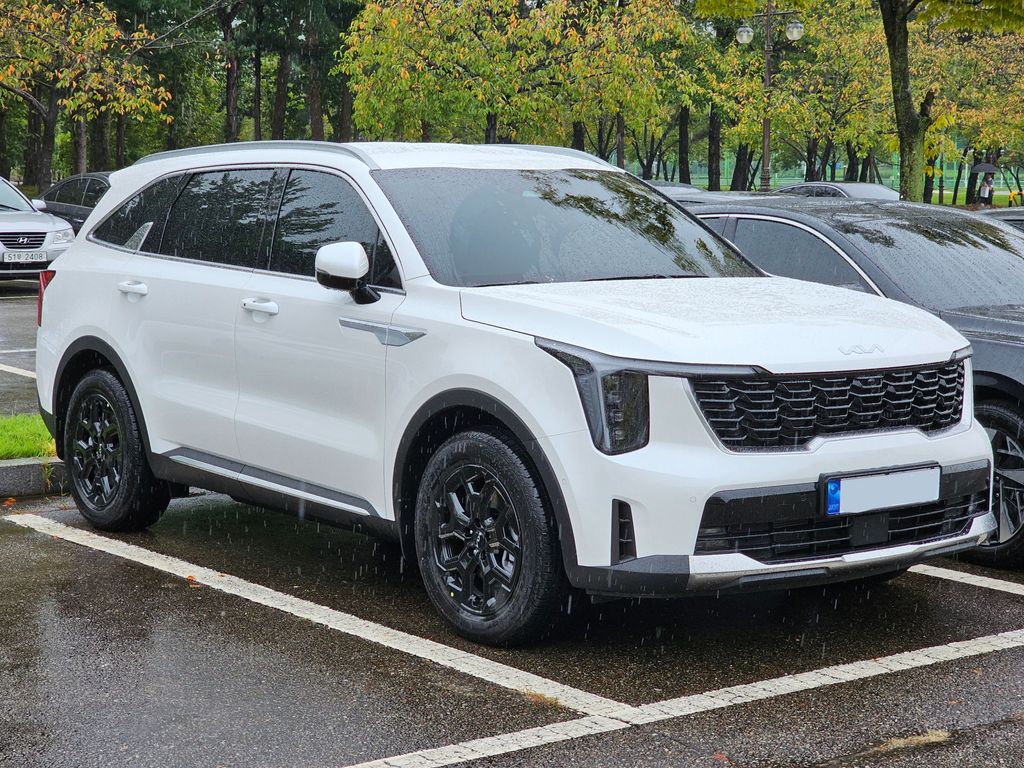
8. **Kia Sorento Hybrid**The Kia Sorento Hybrid presents an intriguing case study in buyer’s remorse, where a vehicle that “seems to be wowing critics” fails to satisfy a significant portion of its actual owners. According to insights reported by Torque News, a striking 58% of Sorento Hybrid owners indicated they would not purchase the SUV again, positioning it as the second-highest vehicle on a list of models people regret buying, just behind the Nissan Sentra. This divergence between critical acclaim and owner sentiment is particularly noteworthy.
While the Sorento Hybrid is lauded for its efficient powertrain, combining a 1.6-liter four-cylinder engine with an electric motor to generate a confident 227 horsepower and 258 lb-ft of torque, enabling a 0-60 mph acceleration in approximately 7.9 seconds, these performance figures do not appear to mitigate owner dissatisfaction. Furthermore, its impressive EPA-estimated fuel economy of 39 mpg in the city and up to 35 mpg on the highway, coupled with a convenient size for maneuverability, seemingly offers compelling advantages.
However, the core of owner regret, as the context clarifies, stems from a specific design limitation: the “small third row.” For families or individuals requiring genuine three-row functionality, this design flaw proves to be a significant drawback. Critics also suggest its towing capacity of 2,000 lbs is considerably less than that of larger alternatives like the Kia Telluride (5,500 lbs), further limiting its utility for those with heavier hauling needs.
Despite these significant owner complaints regarding practicality and utility, it is important to note that the Sorento Hybrid does not appear to suffer from widespread mechanical reliability issues typically associated with buyer’s remorse. The context states it “doesn’t have an official reliability ranking from J.D.power and only has one complaint on Car Complaints, so it doesn’t seem to have significant problems.” This suggests that the regret is less about mechanical failure and more about unmet expectations for an SUV’s primary purpose: spaciousness and family utility.
Ultimately, the Kia Sorento Hybrid highlights that buyer’s remorse isn’t solely driven by mechanical faults or high costs, but can also arise from a mismatch between a vehicle’s design and an owner’s practical requirements. Prospective buyers should thoroughly assess their need for a functional third row and towing capacity against the vehicle’s otherwise strong performance and fuel efficiency. For those for whom a truly spacious third row is paramount, the Sorento Hybrid’s limitations, despite its other merits, are a clear point of dissatisfaction for a majority of owners.
Car Model Information: 2024 Toyota Camry SE
Manufacturer: Kia
Production: 2002–present
ModelYears: 2002–present
Class: Compact SUV,Mid-size crossover SUV
BodyStyle: SUV
Layout: Front-engine, rear-wheel-drive,Front-engine, front-wheel-drive,Front-engine, all-wheel-drive
Chassis: ubl
Categories: 2010s cars, ANCAP large off-road, All-wheel-drive vehicles, All Wikipedia articles written in British English, All articles needing additional references
Summary: The Kia Sorento (Korean: 기아 쏘렌토, romanized: Gia Sorento) is a series of two-wheel drive and four-wheel drive family SUVs manufactured by the South Korean manufacturer Kia since 2002 through four generations. Initially a compact SUV built on a body-on-frame chassis, the second-generation Sorento transitioned to a larger car-based platform which placed it into the mid-size crossover SUV class, and has been developed alongside the Hyundai Santa Fe.
Get more information about: Kia Sorento
Buying a high-performing used car >>>
Brand: Kia Model: Sorento Hybrid
Price: $23,188 Mileage: 64,336 mi.
Read more about: Your Definitive Guide to the Safest Family Vehicles of 2025: Top Models Earning Highest Safety Ratings
Navigating the complexities of vehicle acquisition demands a meticulous approach, moving beyond initial appearances and sales pitches to uncover the true long-term ownership experience. The eight SUVs detailed in this comprehensive analysis — from those burdened by poor design and rapid depreciation to others plagued by significant mechanical failures or crucial utility shortcomings — serve as critical case studies. The recurring themes of unreliable transmissions, excessive maintenance costs, and a disconnect between promised utility and actual performance underscore the invaluable lesson: thorough research, objective data, and a keen understanding of real-world owner feedback are paramount. By heeding these warnings and prioritizing demonstrable reliability, sensible operational costs, and practical alignment with lifestyle needs, consumers can confidently steer clear of buyer’s remorse and secure a vehicle that truly enhances, rather than detracts from, their financial well-being and daily satisfaction.



